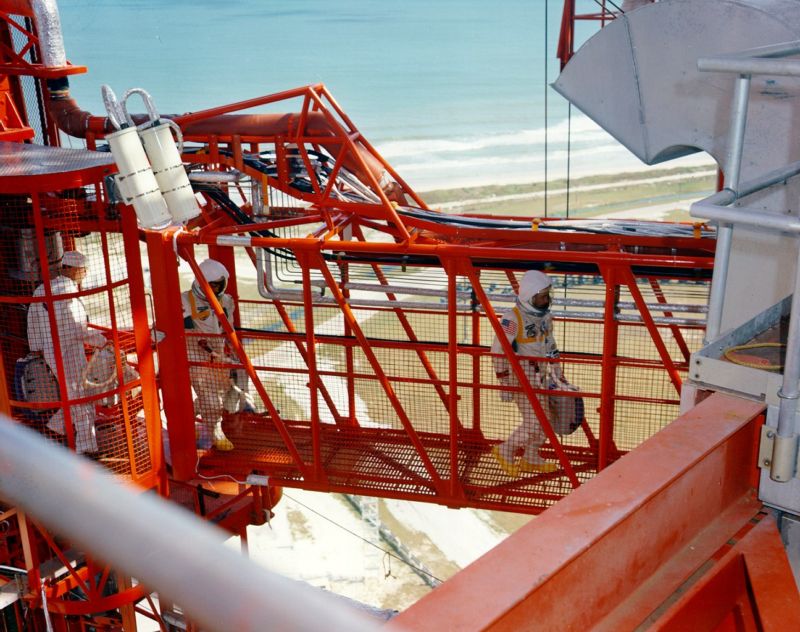The hell of Apollo 1: Pure oxygen, a single spark, and death in 17 seconds
Ars Technica » Scientific Method 2017-01-26

Enlarge / The crew of Apollo 1 crosses the gantry to the spacecraft on the day of the fire, Jan. 27, 1967. (credit: NASA)
On a gray January afternoon in Houston, Walt Cunningham leaned into his Eames Lounge Chair and clasped his hands behind his head, the better to try and bend his thoughts back across five decades. Floor-to-ceiling windows let in a dull light that outlined Cunningham; it was a gloomy backdrop that mirrored the Apollo astronaut’s melancholy mood.
As a backup crew member for the initial Apollo mission, Cunningham recalled clambering into the first Apollo capsule on Jan. 26, 1967 for some pre-flight work. All had gone well, and no one thought the next day’s test, when the capsule would rely on its own internal power for the first time, would prove fatal. “We always expected that we’d lose at least one mission before we landed on the Moon, because of how far we were reaching out,” he said. “But we didn’t expect it to be on the ground.”
The Apollo astronauts, most of them confident or even cocky test pilots, were accustomed to risk. In those early days as NASA invented spaceflight on the fly, all of the vehicles had flaws. The early astronauts trusted that they could handle any situation that came their way. “Rightly or wrongly, we thought we were going to be good enough to compensate for whatever it was,” Cunningham explained.